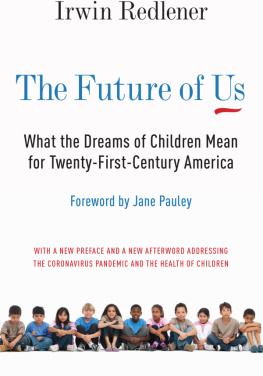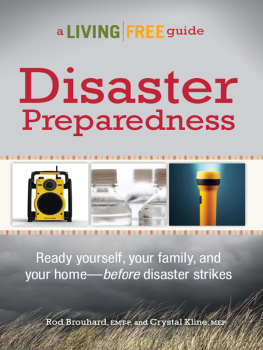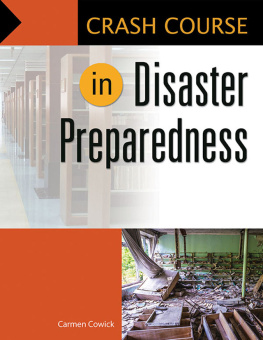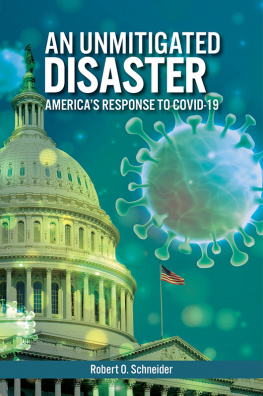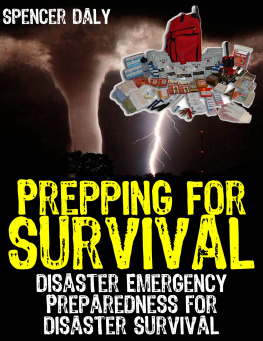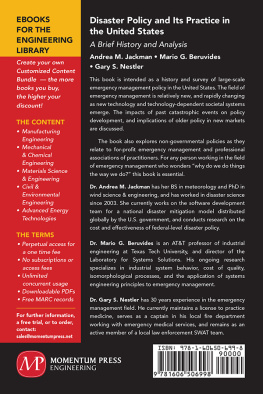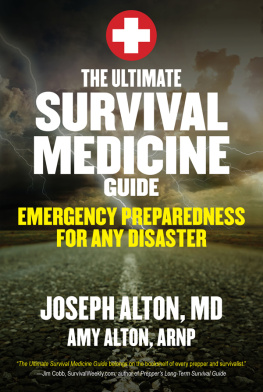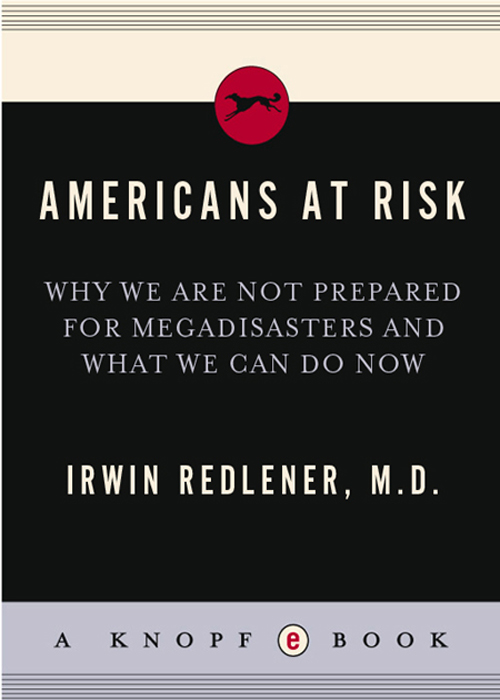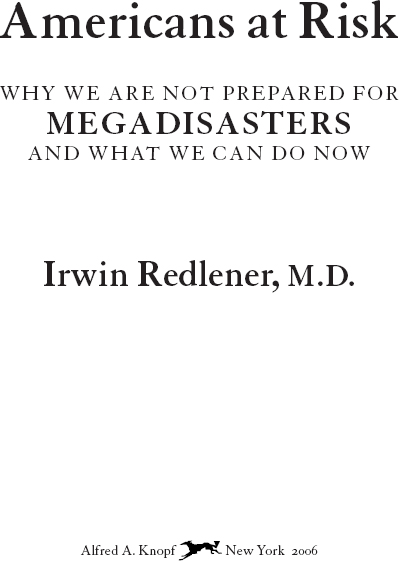Irwin Redlener - Americans at Risk: Why We Are Not Prepared for Megadisasters and What We Can Do
Here you can read online Irwin Redlener - Americans at Risk: Why We Are Not Prepared for Megadisasters and What We Can Do full text of the book (entire story) in english for free. Download pdf and epub, get meaning, cover and reviews about this ebook. year: 2006, publisher: Knopf Doubleday Publishing Group, genre: Politics. Description of the work, (preface) as well as reviews are available. Best literature library LitArk.com created for fans of good reading and offers a wide selection of genres:
Romance novel
Science fiction
Adventure
Detective
Science
History
Home and family
Prose
Art
Politics
Computer
Non-fiction
Religion
Business
Children
Humor
Choose a favorite category and find really read worthwhile books. Enjoy immersion in the world of imagination, feel the emotions of the characters or learn something new for yourself, make an fascinating discovery.

- Book:Americans at Risk: Why We Are Not Prepared for Megadisasters and What We Can Do
- Author:
- Publisher:Knopf Doubleday Publishing Group
- Genre:
- Year:2006
- Rating:5 / 5
- Favourites:Add to favourites
- Your mark:
Americans at Risk: Why We Are Not Prepared for Megadisasters and What We Can Do: summary, description and annotation
We offer to read an annotation, description, summary or preface (depends on what the author of the book "Americans at Risk: Why We Are Not Prepared for Megadisasters and What We Can Do" wrote himself). If you haven't found the necessary information about the book — write in the comments, we will try to find it.
Five years after 9/11 and one year after Hurricane Katrina, it is painfully clear that the governments emergency response capacity is plagued by incompetence and a paralyzing bureaucracy. Irwin Redlener, who founded and directs the National Center for Disaster Preparedness, brings his years of experience with disasters and health care crises, national and international, to an incisive analysis of why our health care system, our infrastructure, and our overall approach to disaster readiness have left the nation vulnerable, virtually unable to respond effectively to catastrophic events. He has had frank, and sometimes shocking, conversations about the failure of systems during and after disasters with a broad spectrum of peoplefrom hospital workers and FEMA officials to Washington policy makers and military leaders. And he also analyzes the role of nongovernmental organizations, such as the American Red Cross in the aftermath of Katrina.
Redlener points out how a government with a track record of over-the-top cronyism and a stunning disregard for accountability has spent billions on random acts of preparedness, with very little to show for itother than an ever-growing bureaucracy. As a doctor, Redlener is especially concerned about Americas increasingly dysfunctional and expensive health care system, incapable of handling a large-scale public health emergency, such as pandemic flu or widespread bioterrorism. And he also looks at the serious problem of a disengaged, uninformed citizenryone of the most important obstacles to assuring optimal readiness for any major crisis.
Redlener describes five natural and man-made disaster scenarios as a way to imagine what we might face, what our current systems would and would not prepare us for, and what would constitute optimal planningfor government and the publicin each situation. To see what could be learned from others, he points up some of the more effective ways countries in Europe, Asia, and the Middle East have dealt with various disasters. And he concludes with a real prescription: a nine-point proposal for how America can be better prepared as well as an addendum of what citizens themselves can do.
An essential book for our time, Americans at Risk is a devastating and realistic account of where we stand today.
Irwin Redlener: author's other books
Who wrote Americans at Risk: Why We Are Not Prepared for Megadisasters and What We Can Do? Find out the surname, the name of the author of the book and a list of all author's works by series.

